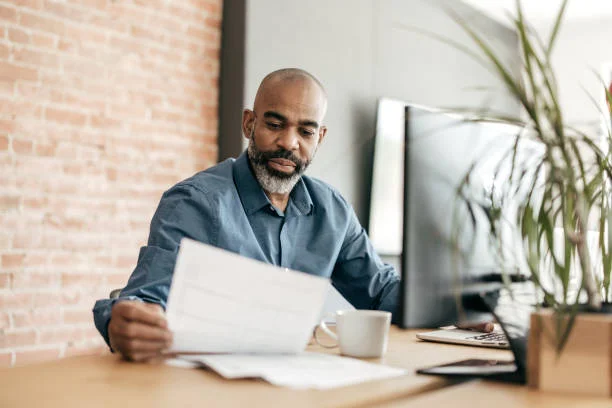How to Write a Letter
Structure
When writing a letter, start with the sender’s address followed by the date. Then, include the recipient’s address and a salutation like “Dear.”
Content
In the body of the letter, express your thoughts clearly and concisely. Use paragraphs to organize your ideas logically.
Tone and Language
Maintain a polite tone throughout the letter. Choose words appropriate for the recipient and the letter’s purpose, including salutations.
Closing
End the letter with a closing phrase, such as “Sincerely” or “Best regards,” followed by your signature.
Writing Formal Letters in Block Style
Structure Basics
When writing formal letters in block style, ensure the entire content is justified to the left. Include the sender’s and recipient’s addresses.
Keep a clear space between each section: date, sender’s address, recipient’s address, salutation, body paragraphs, closing, and signature.
Addressing Recipient
Address the recipient formally using titles such as Mr., Mrs., Dr., or their full name if you’re unsure about their preference.
Professional Tone
Maintain a professional tone throughout the letter. Avoid using casual language or contractions like “don’t” or “can’t.”
Conciseness and Clarity
Write concisely and clearly. Avoid unnecessary details or overly complex sentences that may confuse the reader.
Proofreading
Before sending the letter, proofread it carefully for spelling or grammatical errors. Ensure all information is accurate and up-to-date.
Writing the Salutation
Addressing the Recipient
Begin the salutation with “Dear” followed by the recipient’s title and last name, such as “Mr. Smith” or “Ms. Johnson.”
When unsure of the recipient’s gender or name, use a generic salutation like “To Whom It May Concern.”
Including Proper Titles
If the recipient holds a specific title, include it in the salutation, such as “Dr. Brown” or “Professor Lee.”
Avoid using informal titles like “Hey” or “Hi” in formal letters.
Considering Cultural Differences
Be mindful of cultural nuances when addressing recipients from diverse backgrounds.
Research proper salutations based on the recipient’s culture to show respect and avoid unintentional offence.
Composing the Body of a Letter
Structure
When composing the body of a letter, it is crucial to follow a structured format. Begin with an introduction that sets the tone for the rest of the letter. This can include a brief overview of the letter’s purpose or a friendly greeting.
Next, move on to the main content, where you provide detailed information or discuss the main subject of the letter. Use clear and concise language to ensure the reader easily understands your message. After presenting the main content, it’s time to include any additional details that support your message. This could involve providing examples, statistics, or personal anecdotes to strengthen your argument or convey your thoughts effectively.
Tone and Language
Consider the tone of your letter when composing the body. The tone should be consistent throughout the entire letter. Adjust your language accordingly based on the recipient and purpose of the letter.
Maintain a professional and respectful tone in formal letters while being more casual and friendly in personal correspondence. Your language should be appropriate for your relationship with the recipient and the message you want to convey.
Remember to proofread your letter before finalizing it. Check for spelling or grammar errors to ensure clarity and professionalism in your communication.
Crafting the Complimentary Close
Closing Phrases
The complimentary close is the final part of a letter before the signature. It typically consists of phrases like “Sincerely,” “Regards,” or “Yours truly.”
Craft your closing phrase based on the tone and formality of your letter. For formal letters, use phrases like “Yours faithfully” or “Respectfully.” In contrast, informal letters can use words like “Best regards” or “Cheers.”When selecting a closing phrase, consider the recipient’s relationship with you. For instance, a business letter to a client may require a more formal closing compared to a letter to a friend.
Signature Placement
After the complimentary close, leave space for your signature. If you send a physical letter, sign directly above your typed name. You can use a digital signature or type your name in electronic communications.
It is common in professional settings to include your title below your name, such as “John Smith, Marketing Manager.”
Remember to proofread your letter before signing it to ensure accuracy and professionalism.
Writing Formal Letters in A.M.S. Style
Addressing the Recipient
When addressing the recipient in a formal letter, it is crucial to use the appropriate title, Mr., Mrs., or Dr., followed by their last name. This demonstrates respect and professionalism. For example, “Dear Mr. Smith” is suitable for starting a formal letter.
Structuring the Body
In the body of the letter, maintain a clear and concise tone. Begin by stating the purpose of the letter in the first paragraph. Subsequent paragraphs should provide detailed information or requests. Use polite language and avoid jargon that may be unfamiliar to the reader.
Concluding with a Signature
At the end of a formal letter, including a complimentary close before your signature is customary. Typical closings include “Sincerely,” “Yours faithfully,” or “Best regards.” After the closing, leave space for your signature above your typed name.
Including Contact Information
Ensure that your contact information is readily available if the recipient needs to follow up. Include your full name, address, phone number, and email address below your signature or in the letter’s header.
Tips for Effective Letter Writing
Structure Your Letter
When writing a letter, start with the date and recipient’s address. Follow this with a salutation, body paragraphs, and a closing.
Maintain a formal tone throughout the letter and use clear, concise language to convey your message effectively.
Use Clear and Concise Language
Avoid using complex words or jargon that may confuse the reader. Instead, opt for simple, easy-to-understand language.
Keep your sentences short and to the point. This helps in maintaining the reader’s interest and clarity of communication.
Proofread and Edit
Before sending your letter, take the time to proofread it for any grammatical errors or typos. Editing ensures that your message is professional and error-free.
Consider asking someone else to review your letter. A fresh set of eyes can catch mistakes you might have missed.
Introduction to Letter Writing
Importance of Written Communication
Letters have been a vital form of communication for centuries. They hold significance in expressing thoughts, emotions, and information effectively. Written communication through letters allows for detailed explanations and personal touches that may be missed in other forms of communication.
Letters provide a tangible record of conversations and serve as valuable historical artefacts. They offer a sense of permanence and authenticity that digital messages often lack. Writing a letter can also be therapeutic, allowing individuals to express themselves freely without interruptions.
Evolution of Letter Writing
Over time, the art of letter writing has evolved with technological advancements. The modes of communication have diversified from handwritten letters sent via postal mail to emails and instant messaging. Despite these changes, the essence of conveying messages through written correspondence remains timeless.
The advent of email revolutionized letter writing, enabling faster and more convenient communication across long distances. However, some argue that traditional letters’ charm, personal charm, and personal touch are lost in digital communication. Balancing efficiency with emotional connection is critical in modern letter-writing practices.
Structure of a Letter
Parts of a Letter
A letter comprises several key components: the heading, date, salutation, body, closing, and signature. The heading includes the writer’s address, the date, and the recipient’s address. The salutation addresses the recipient, like “Dear Mr. Smith,”. The body contains the message, while the closing phrase, such as “Sincerely,” precedes the signature.
Heading and Date
The heading, placed at the top right or left corner, includes the sender’s address and date of writing. It helps identify the sender and when the letter was composed.
Salutation and Body
The salutation is the greeting at the beginning of a letter. It sets the tone for the communication and establishes a connection with the recipient. The body consists of the main message or content of the letter.
Closing and Signature
The closing provides a courteous ending to the letter, such as “Yours truly” or “Best regards,”. It signifies the conclusion of the communication. The signature is where the writer signs their name, adding a personal touch to the letter.
Layout of a Formal Letter
Addressing the Recipient
When writing a formal letter, address the recipient appropriately by using titles such as “Mr.”, “Ms.”, or “Dr.” followed by their last name. Avoid using first names unless you have a close relationship.
Date and Sender’s Address
The date should be placed at the top right corner of the letter, followed by the sender’s address. This helps establish credibility and provides contact information if needed.
Salutation and Body
Begin the letter with a formal salutation like “Dear Sir/Madam” or “To Whom It May Concern.” The body should be concise and to the point, focusing on the purpose of the communication.
-
Use clear and precise language to convey your message effectively.
-
Avoid using slang or informal expressions in a formal letter.
Closing and Signature
End the letter with a professional closing, such as “Sincerely” or “Yours faithfully,” followed by your signature. Leave enough space between the closing and your printed name for signing.
Types of Letters to Write
Business Letters
Business letters are formal correspondences used for professional communication. They typically follow a specific format, including the sender’s address, date, recipient’s address, salutation, body paragraphs, and closing remarks.
Business letters serve various purposes, such as requesting information, placing orders, making inquiries, or expressing appreciation. They play a crucial role in maintaining professional relationships and conveying essential messages effectively.
Personal Letters
Personal letters are informal communications exchanged between individuals. They allow for a more casual tone and often include personal anecdotes, feelings, or updates on one’s life. These letters are commonly used to stay in touch with friends and family.
Personal letters provide a platform for expressing emotions, sharing experiences, or simply catching up with loved ones. They add a personal touch to communication and can strengthen relationships despite physical distances.
Application Letters
Application letters are written when applying for a job, internship, or admission to an educational institution. They highlight the applicant’s qualifications, skills, and interest in the position or program and aim to persuade the recipient to consider the applicant positively.
Application letters are essential in the recruitment process. They showcase the candidate’s suitability for the role and serve as the first impression a potential employer or academic institution has of an applicant.
Including Contact Information and Date
Importance of Contact InformationIncludingg contact information is crucial for effective communication. This ensures that the recipient can easily reach out to the sender if needed. Providing details like phone numbers, email addresses, and physical addresses enhances the letter’s credibility.
It is essential to place the contact information at the top of the letter, typically aligned to the right-hand side. This makes it easily visible and accessible to the reader. Including the sender’s name and address adds a personal touch to the correspondence.
Significance of Adding Date
Adding the date to a letter is equally important. It helps establish a timeline for the communication. The date indicates when the letter was written, providing context for the recipient. It also serves as a reference point for future correspondence or follow-ups.
It is common practice to include the date right below the contact information. It should be positioned on the left-hand side of the letter, aligned with the sender’s address. This placement ensures clarity and organization in the overall structure of the letter.
Mentioning Enclosures in Letters
Purpose of Enclosures
Enclosures indicate additional documents or items included with a letter, ensuring that the recipient is aware of all materials being sent.
Proper Placement
Enclosures are typically mentioned after the closing remarks of the letter. It is essential to list the items enclosed to avoid any confusion for the recipient.
Clarity and Conciseness
When listing enclosures, be clear and concise about their contents. If there are multiple items, use bullet points to make it easier for the recipient to identify each enclosure.
Importance of Noting Enclosures
Noting enclosures is crucial in professional correspondence. It helps ensure that the recipient receives all necessary documents. Failure to mention enclosures can lead to misunderstandings.
How to Write Informal Letters
Addressing the Recipient
When writing informal letters, address the recipient using their first name. For example, “Dear Sarah” creates a friendly tone.
Opening Paragraph
In the opening paragraph, start with a warm greeting and briefly mention the reason for writing the letter. Keep it casual and engaging.
Body Content
The body of the letter should contain the main message or purpose. Use simple language and structure your points.
Asking Questions
To encourage a response, ask questions in your letter. This can prompt the recipient to share their thoughts or experiences.
Closing Remarks
End the letter with closing remarks that express gratitude or well wishes. Sign off with phrases like “Best regards” or “Take care.”
Placing the Date at the Top
Importance of Date
Placing the date at the top of a letter is crucial for providing a reference point. It helps the recipient know when the letter was written, allowing them to understand the context better.
Including the date also adds a sense of timeliness to your communication. It shows that you value the recipient’s time and are considerate of keeping them informed about when the letter was composed.
Proper Format
When including the date in a letter, it should be positioned at the page’s top right or left corner. The month should be spelt out, followed by the day and year. For example, “June 15, 2022.”
Always use a consistent format for writing the date to enhance clarity. This ensures uniformity across all written communications and presents a professional image.
Example:
-
June 15, 2022
Understanding P.S. in Letters
Purpose StatP.S.S.ent
PS in letters stands for P.S.P.S.tscript, an additional note added after the letter’s main body. It allows the writer to include something they forgot or a crucial point they want to emphasize. Postscripts are commonly used to add a personal touch or a last-minute thought.
Historical Significance
-
The use of postscripts dates back to ancient times when people wrote letters by hand, and adding extra information at the end was a common practice.
-
In the 19th century, postscripts became more prevalent to include essential details without rewriting the entire letter.
Technical Details
-
Postscripts are usually placed below the signature at the end of the letter.
-
They are often preceded by “P.S.” or “Postscript, “And P.S.P. S. them are easily recognizable.
Examples of Usage
-
Writers may use postscripts to express additional gratitude, provide updates, or share a personal anecdote.
-
In informal letters, postscripts can be used humorously or to convey intimate thoughts not mentioned earlier.
Preparing the Envelope for Sending
Address Placement
When sending a letter, place the recipient’s address in the centre of the envelope. This ensures accurate delivery and a professional appearance.
Stamp Affixing
Affix the stamp on the top right corner of the envelope. Ensure the stamp is securely attached to avoid any issues during transit.
Return Address Inclusion
Please include your return address in the top left corner of the envelope. This is crucial in case the letter cannot be delivered to the recipient.
When preparing the envelope for sending, follow meticulously to ensure your letter reaches its destination promptly and without complications. By correctly placing the recipient’s address, affixing the stamp correctly, and including your return address, you are setting up your letter for successful delivery.
Importance of Handwritten Correspondence
Personal Touch
Handwritten letters provide a personal touch that digital communication lacks. The effort put into crafting each word by hand adds sincerity and authenticity to the message.
Expressing thoughts and emotions through handwritten letters allows for a deeper connection between the sender and the recipient. The physical act of writing conveys a sense of care and thoughtfulness that cannot be replicated through emails or text messages.
Emotional Impact
Receiving a handwritten letter can evoke strong emotions in the recipient. The tactile experience of holding a piece of paper with words explicitly penned for them can create a lasting impact.
A handwritten letter can brighten someone’s day, uplift their spirits, or provide comfort during difficult times. It serves as a tangible reminder of the sender’s presence and thoughtfulness, making it a cherished keepsake.






